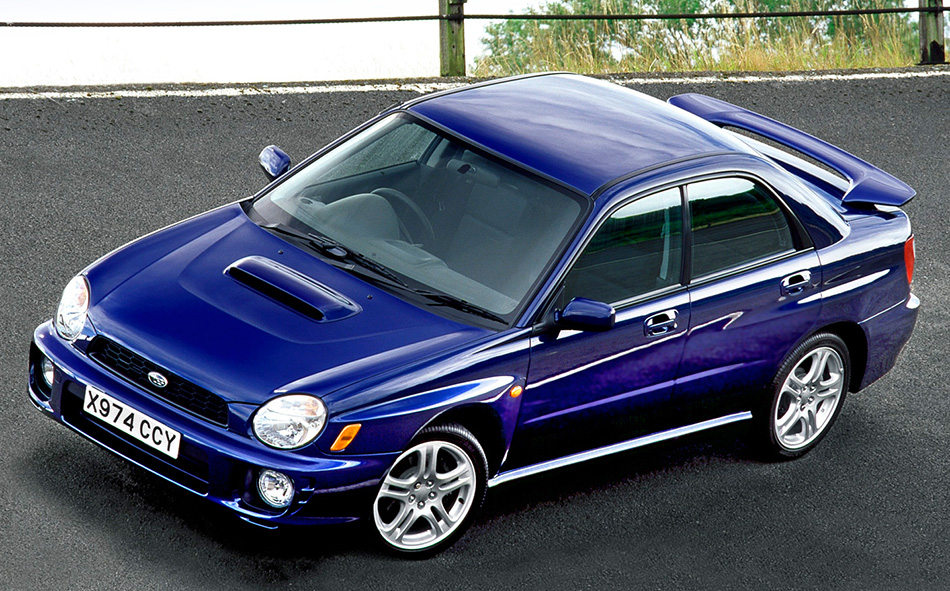The Subaru Impreza WRX, which was introduced for the 2002 model year, quickly established itself as a performance benchmark in the sport-compact segment and became a runaway sales success for Subaru. In its first eight months on sale, the Impreza WRX won over more than 18,000 driving enthusiasts who discovered a winning combination of turbocharged All-Wheel Drive performance and value that simply cannot be found in other sport-compact competitors.
Following up on the "Blaze Yellow" limited edition WRX offered when the model was introduced, Subaru will offer a "Sonic Yellow" edition that's limited to 1,500 WRX sedans and sport wagons in the fall of 2002. The special edition sedan also includes the rear spoiler that's normally an option on the WRX.
Although priced to compete with such sport-compact models as the Acura RSX Type S and Volkswagen GTI VR6, the Impreza WRX trumps them with greater power and something no other car in the segment offers: full-time All-Wheel Drive. The Subaru WRX is the basis for the Impreza rally cars that compete in the World Rally Championship and SCCA Pro Rally series.
An exclusive intercooled/turbocharged 2.0-liter four-cylinder engine powers the WRX models. This horizontally opposed, double overhead-cam powerplant produces 227 horsepower at 6,000 rpm and 217 lb.-ft. of peak torque at 4,000 rpm, enabling the WRX to accelerate from zero-to-60 mph in just 5.8 seconds. Two more impressive specifications that grab enthusiasts' attention include a power-to-weight ratio of just 13.8 lb./hp and a specific engine output of 113.5 hp/liter.

In terms of all-wheel drive performance, only far-more-expensive European sport sedans can compare to the WRX.
The Impreza WRX excels in safety, too. The new-generation Impreza achieved the highest possible rating ("good") for crashworthiness when subjected to 40-mph frontal offset crash tests by the Insurance Institute for Highway Safety (IIHS), also earning the Institute's "best pick" designation. (The IIHS tested a 2002 model year WRX Sedan.)
Impreza & WRX/5
Like every Subaru sold in North America since 1997, all 2003 Impreza models feature the Subaru All-Wheel Driving System for optimal grip on all types of road surfaces, dry or wet. Subaru All-Wheel Drive acts as both a performance advantage and an all-weather handling aid, especially when compared to front-wheel or rear-wheel drive cars. In the WRX, the standard five-speed manual transmission is teamed with Continuous All-Wheel Drive.
The optional four-speed electronic automatic transmission (4EAT) comes teamed with Variable Torque Distribution (VTD) All-Wheel Drive.
"High-Density" Sport Machines
Subaru designed the Impreza WRX to convey the look and feel of a "high-density" performance car. Inspiration for the sedan's wider track and blister-fender design came from the Impreza World Rally Championship car. In front, the Impreza WRX presents a bold face with oval headlights and the Subaru trapezoidal grill. The front bumper includes an integrated spoiler with a large air intake and foglights. The functional hood scoop supplies cool air flow for the intercooler. Aside from the front view, the WRX Sport Wagon's body design is uniquely different from the sedan's, characterized by pronounced fender flares instead of fender blisters.
Both Impreza Sedan and Sport Wagon body types are based on a robust platform using a Ring-Shaped Reinforcement Frame body structure for added safety. A hydroformed front subframe along with tailored-blank welded B-pillars and side sills provide an exceptionally strong structure that's very stiff in bending and twisting strength. The high degree of rigidity improves handling response and ride quality while helping to reduce interior noise.
Source: Subaru








